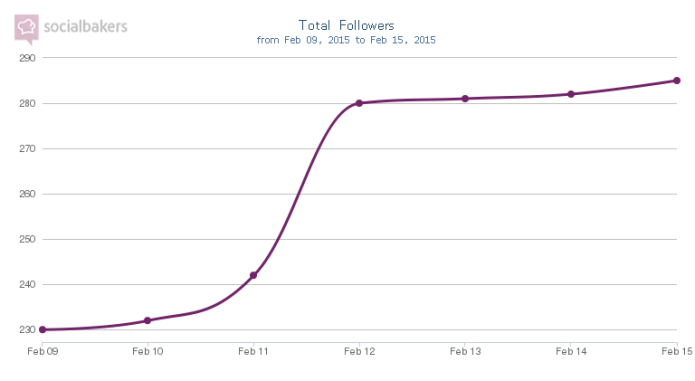Stattos get social
Over the last year a big focus for the Social Media team has been to encourage and support our team of tweeting statisticians. We’ve got 10 so far and between them they cover most of our main statistical areas. We use Hootsuite to assign queries around their releases, and flag up interesting conversations to contribute to, and we’re able to see when they’ve responded.
We’ve raised awareness of our Hootsuiters with Q&As, retweeting their tweets and promoting their accounts ahead of a release. It’s worked well for boosting followers and increasing the amount of queries to them, and we’ve seen real value in engagement from doing it. People appreciate being able to speak directly to the faces behind the figures.
We post the ‘big ticket’ items from the main ONS account, but it’s useful to have statisticians tweet extra snippets from releases and post from a more personal angle.
John Flatley, who heads up our Crime statistics department, is a great example of one of our statisticians who is proactive on Twitter and for our latest Crime release we decided to give a bigger push to promote his account. From tweeting ahead that the release was coming out, and reminding people that they could follow John, we saw a noticeable spike in followers.
For the day’s content we prioritised the key headline messages that we wanted to come from @ONS but trialled using John’s account for more of these than usual, with ONS retweeting. It helped that there was plenty of interesting content, including ‘5 facts about alcohol-related violence’ with simple, clear infographics that work well on social for us. Also crime is an area that’s of wide interest and a key societal issue that doesn’t require economic knowledge to understand it, unlike some of our outputs.
https://twitter.com/ONSJohnFlatley/status/565828051528065024
https://twitter.com/ONSJohnFlatley/status/565816724910788608
One benefit of retweeting John’s account is more queries going direct to his account rather than to @ONS and us having to assign them, saving time cutting us out as the middlemen and highlighting John as the expert on the subject.
It’s important to strike a balance between original @ONS tweets and retweets, as people look out for our messages and recognise the logo in their timelines, so a retweet from an unfamiliar account may pass them by. But this is a good example of where both the messaging and approach was strong, with interesting content that has a wide appeal, and a helpful statistician who responds speedily and helpfully. This approach may not be suitable for the more niche areas that don’t have regular outputs, but statisticians that run those releases are able to use Twitter to engage with interested users directly, nurturing relationships one on one.
We’re continually trying to improve what we do on social, helping our audience where we can, and we’re in the process of recruiting more Hootsuiters and campaigning around them. We look through successes and areas to improve, helping them to tweet professionally as individuals, but there needs to be genuine interest and appetite for it in order to work. It takes practice for statisticians to understand the channel and write less formally and with so few words to play with. They’re used to the freedom of long statistical bulletins, and when responding to queries technical explanations aren’t easy to express in under 140 characters so sometimes it’s more suitable to direct to an email address/phone number to respond in detail.
Customer service has become a bigger part of what we do and we’ve established a reputation for being helpful, friendly, and providing quick responses. Our overall engagement is increasing, and we recently reached over 100,000 followers, growing around 7,000 more each month. A quick analysis of our responses shows:
- No. of responses from @ONS July-Dec 2013 (6 months before we started Hootsuiting) = 396
- No. of responses from @ONS Aug 2014-Jan 2015 (when Hootsuite was in full swing) = 424
- No. of responses from our Hootsuiters Aug 2014-Jan 2015 = 281
There will always be a need for the central @ONS account and our Hootsuiters will never cover every type of query we receive, but as the overall number of queries has gone up, statisticians have taken a big chunk of these from the central Social Media team and built relationships with key users in the process.
Listening and interacting on social should become something that naturally becomes part of our Hootsuiters’ day to day work, proactively engaging in relevant discussions and adding their input. They are the experts after all, and we can’t spot every conversation around ONS content. John Flatley regularly contributes to discussions around crime, and an individual account allows for more freedom to speak with a personality than a corporate one, like this recent example of tweeting article that uses Crime statistics to look at the suspects in who killed Lucy Beale…that’s something the corporate account probably couldn’t get away with!
https://twitter.com/ONSJohnFlatley/status/568155917423943680
Social Media Manager
7 comments on “Stattos get social”
Comments are closed.

Everyone loves what you guys tend to be up too. This sort of clever work
and exposure! Keep up the wonderful works guys I’ve incorporated you guys to my own blogroll.
Thanks for your kind comments, Bill! Glad you found it interesting.